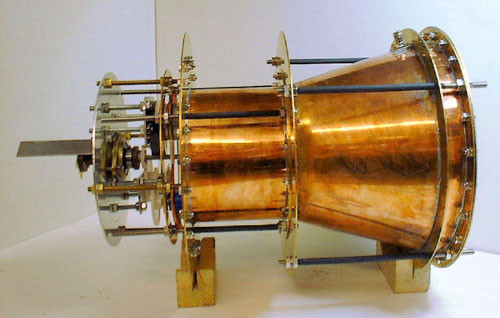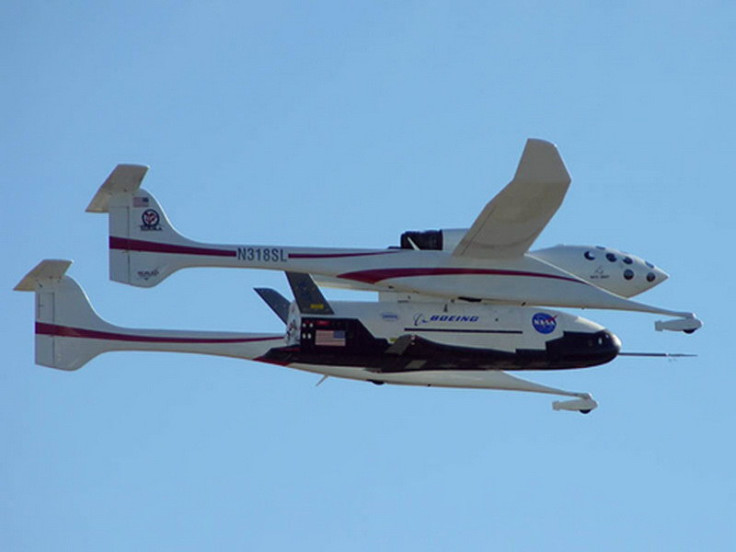EmDrive: Nasa Eagleworks peer-reviewed paper finally published by AIAA saying it works
The Nasa Eagleworks paper says EmDrive works because of the pilot-wave theory, generating 1.2mN/kW of thrust.
After months of speculation, rumours and a leaked paper, the American Institute of Aeronautics and Astronautics (AIAA) has finally published a peer-reviewed paper by Nasa Eagleworks researchers on the controversial space propulsion technology EmDrive which shows that the device does indeed work.
The open access paper, entitled "Measurement of Impulsive Thrust from a Closed Radio-Frequency Cavity in Vacuum" was published online on Thursday 17 November ahead of its debut in the print edition of the AIAA Journal of Propulsion and Power in December.
It is authored by Harold White, Paul March, James Lawrence, Jerry Vera, Andre Sylvester, David Brady and Paul Bailey – all engineers from the Nasa Eagleworks laboratory who are well known to EmDrive enthusiasts.
Similar to an early draft of the paper that was leaked onto the Nasa Spaceflight forum earlier this month by Australian fan Phil Wilson, the published paper reveals that Nasa Eagleworks did indeed build a drive that generated 1.2 millinewtons per kilowatt of thrust in a vacuum. Of course, this amount of thrust is incredibly low, but the scientists said that they were more concerned about trying to prove that the device worked at all.
"Thrust data from forward, reverse, and null suggested that the system was consistently performing at 1.2±0.1 mN/kW, which was very close to the average impulsive performance measured in air. A number of error sources were considered and discussed. Although thermal shift was addressed to a degree with this test campaign, future testing efforts should seek to develop testing approaches that are immune to CG shifts from thermal expansion," the researchers concluded.
"Although this test campaign was not focused on optimising performance and was more an exercise in existence proof, it is still useful to put the observed thrust-to-power figure of 1.2 mN/kW in context. The current state-of–the-art thrust to power for a Hall thruster is on the order of 60 mN/kW. This is an order of magnitude higher than the test article evaluated during the course of this vacuum campaign; however, for missions with very large delta-v requirements, having a propellant consumption rate of zero could offset the higher power requirements."

And why exactly does the EmDrive work?
The researchers have even put forward a hypothesis about why the EmDrive works, claiming it could be due to exotic physics relating to the "pilot-wave theory".
The EmDrive is the invention of British scientist Roger Shawyer, who proposed in 1999 that based on the theory of special relativity, electricity converted into microwaves and fired within a truncated cone-shaped closed metal cavity causes the microwave particles to exert more force on the flat surface at the large end of the cone (i.e. there is less combined particle momentum at the narrow end due to a reduction in group particle velocity), thereby generating thrust.
His critics say that according to the law of conservation of momentum, his theory cannot work as in order for a thruster to gain momentum in one direction, a propellant must be expelled in the opposite direction, and the EmDrive is a closed system.
However, Shawyer claims that following fundamental physics involving the theory of special relativity, the EmDrive does in fact preserve the law of conservation of momentum and energy.
For a more in-depth explanation about the EmDrive saga, see What is the EmDrive and why should I care?
The accepted interpretation of quantum mechanics, known as the Copenhagen Interpretation, which was devised by Niels Bohr and Werner Heisenberg in 1927, states that particles in physical systems generally do not have definite properties prior to being measured, and that quantum mechanics can only predict the probabilities that measurements will produce certain results.
In contrast, the pilot-wave theory (also known as the "De Broglie–Bohm theory" or "Bohmian Mechanics") states that all particles must have precise positions at all times even when not being observed — a view that is largely rejected because it implies that the world must be strange in other ways.
As with the Copenhagen view, there's a wave function governed by the Schrödinger equation. A wave function is a description of the quantum state of a system. The pilot-wave theory states that if you know the initial state of a system, and you have the wave function, then you will be able to calculate where each particle will end up.
"Although the idea of a pilot wave or realist interpretation of quantum mechanics is not the dominant view of physics today (which favours the Copenhagen interpretation), it has seen a strong resurgence of interest over the last decade based on some experimental work pioneered by Couder and Fort," the researchers explained.
"This paper created a quasi-classical model of the hydrogen atom in the Comsol Multiphysics software that modeled the vacuum around the proton as an electron-positron plasma. These analysis results showed that the n=1n=1 to 7 energy levels of the hydrogen atom could be viewed as longitudinal resonant acoustic wave modes in the quantum vacuum. This suggests that the idea of treating the quantum vacuum as a dynamic medium capable of supporting oscillations might be valid. If a medium is capable of supporting acoustic oscillations, this means that the internal constituents were capable of interacting and exchanging momentum.
"If the vacuum is indeed mutable and degradable as was explored, then it might be possible to do/extract work on/from the vacuum, and thereby be possible to push off of the quantum vacuum and preserve the laws of conservation of energy and conservation of momentum."
So what now?
While the paper may have been published by the AIAA, sources in the know have told IBTimes UK that Nasa has indeed shut down the Eagleworks laboratory, and it is believed lead engineer Paul March decided to leave in October due to frustrations over the researchers' work not being taken seriously by the space agency.
Back in the UK, EmDrive inventor British Shawyer continues to develop a second generation version of the microwave thruster with many more magnitudes of the thrust than the Eagleworks device for commercialisation with Gilo Industries Group and has applied for patents both in the UK and internationally that have been published and are currently going through the evaluation process.

"[It's] all very slow but very convincing. There's some very serious work going on and I expect to see a lot of exciting stuff about the EmDrive in the news in the near future," Shawyer told IBTimes UK earlier this month in relation to the leaked Nasa paper, which also reported a result of 1.2 millinewtons per kilowatt of thrust.
"It's a nice bit of publicity but really it's nothing new. But for the people who are really sceptical about it, seeing something move is the most important thing. When Galileo was put on trial by the Catholic Church in 1633, he reportedly said of the Earth moving around the Sun, 'Even so, it does move.'"
Senior sources in the international space industry have also told IBTimes UK that the US Air Force is already testing EmDrive on the X37-B spaceplane, and that China is doing the same in its Tiangong-2 space laboratory.
However, it is important to note that many in the scientific community still do not believe that the controversial technology works at all, and there will likely be heavy critiques of the Nasa Eagleworks paper in the near future.
© Copyright IBTimes 2025. All rights reserved.






















